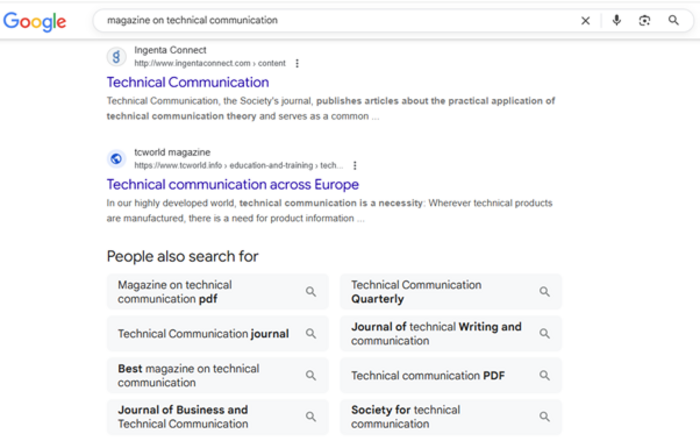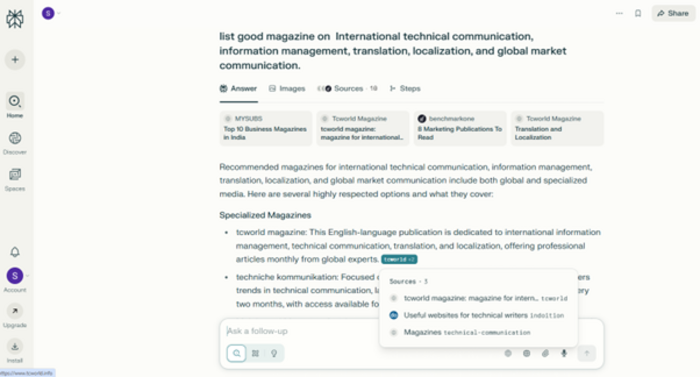Technical writers often work with marketing teams to position documentation sites as traffic generators for their brand. This involves understanding keyword searches and search volume to optimize documentation articles for ranking on the top search results page of popular search engines. The technique that is applied to ensure that your documentation article comes on top of search results is called Search Engine Optimization, commonly referred to as SEO. The SEO technique helps your customers and prospects find your documentation site more quickly, as customers use popular search engines for help as their first step. If SEO techniques are applied well, they not only help prospects to discover your documentation but also enhance your brand visibility, leading to generating potential prospects for your marketing teams. Marketing teams sometimes look at the documentation site as a lead magnet. Thus, it is important for technical writers to learn about SEO techniques.
Search Engine Optimization
SEO techniques involve having a good content structure, adding SEO meta descriptions to articles, and having an appropriate slug added to the article URL. Techniques such as adding Alt text to all media artifacts, using inclusive language, and adding an overview section at the start of the content help your article to rank higher. The actual trick in SEO is adding appropriate links in the documentation article to other sources and creating backlinks to the published documentation articles. This linking helps to boost the ranking of documentation articles for a particular keyword that is being targeted. Tools such as Google Search Console provide insights into “search keywords” that are used to generate traffic to a specific documentation article. This helps technical writers to create content for specific keywords and analyze the impact of their efforts.
Following the introduction of ChatGPT and similar GenAI tools, web traffic through keyword searches from traditional search engines has dropped. Modern customers are flocking to ChatGPT, Claude, or Perplexity.ai to find answers to their questions. The old SEO practices do not hold for optimizing content to appear in the responses generated by popular Large Language Model tools.
Generative Engine Optimization
Generative Engine Optimization (GEO), also known as AI SEO or Answer Engine Optimization (AEO), is a new practice ensuring that your documentation content is used as part of generated responses and receives a citation link from ChatGPT-like tools. This practice involves:
- Semantic structuring of your documentation article that is ingestible by ChatGPT-like tools.
- Ensuring content is of good quality and high accuracy in content with no ambiguities.
- Ensuring your brand or domain has good credibility for producing trusted content.
- Content is comprehensive and complete, covering certain topics/themes in depth.
Given that modern chatbots use Retrieval Augmented Generation (RAG), the GEO practice also involves interacting with customers, prospects, and community members in common discussion forums such as Reddit, Stack Overflow, and so on. This helps to have some inherent knowledge present in the Large Language Model, as the corpus of internet data – especially Reddit data – is used for training these models. Unlike SEO, where you need to build source authority to secure your spot at the top of search results, GEO primarily focuses on getting information into synthesized responses of ChatGPT-like tools.
Tactics to get cited
Given that ChatGPT-like tools do not provide insight into “prompts” that have used content from documentation articles in the generated response, it is harder for technical writers to formulate a strategy to maximize the content use and its citation. The only analytics technical writers get is a referral link to their documentation article. Even though it incentivizes technical writers to produce high-quality content, it fails to provide the “intent behind the query”. Here are some tactics to get cited:
- Collate all keywords from Google Search Console and feed them into ChatGPT with a prompt “Transform these keywords into questions people would ask,” and create a question list. Additionally, you can also listen to sales discovery and demo calls to curate more questions.
- Put these questions into ChatGPT, Claude.ai, Perplexity.ai, Gemini, to gauge how often your content shows up in the generated response.
- Analyze the rationale behind using cited material from external sources.
- Find the knowledge gap and address it.
- Include more details about your use cases, product features, and integrations, such that your content is more comprehensive.
It is also important to have content for “follow-up questions” that many ChatGPT-like tools recommend. Thus, having complete information around a certain topic improves the chances of your content being used in the generative response of popular ChatGPT-like tools. Technical writers need to identify and fix knowledge gaps in their existing documentation articles to maximize the chance of being picked by ChatGPT-like tools for response generation and thus receive a referral link back to the original article.
Success metrics
To quantify the efforts to optimize documentation content for GEO, it is important for technical writers to define success metrics. Typical metrics to measure impact are:
- Knowledge coverage of your documentation
- Number of citations received from ChatGPT-like tools. This can be quantified using Google Analytics
- Number of new articles created to address new knowledge demands from customers
- Number of updates made to existing articles to address knowledge gaps
Technical writers can strategically create the right content because AEO offers faster wins and helps early-stage companies to use documentation as a tool to create brand awareness and lead generation.
Closing remarks
Technical writers need to improve their GEO practices. Given the shift in customer behavior in adopting GenAI tools, customers are looking for quick answers to their questions. In addition to chatbots present on the documentation site, consumer AI products are sources where your customers will enter a question about your products or services. The GEO practices will revolutionize how technical writers create and update new knowledge base articles to help their customers get the best outcome.


